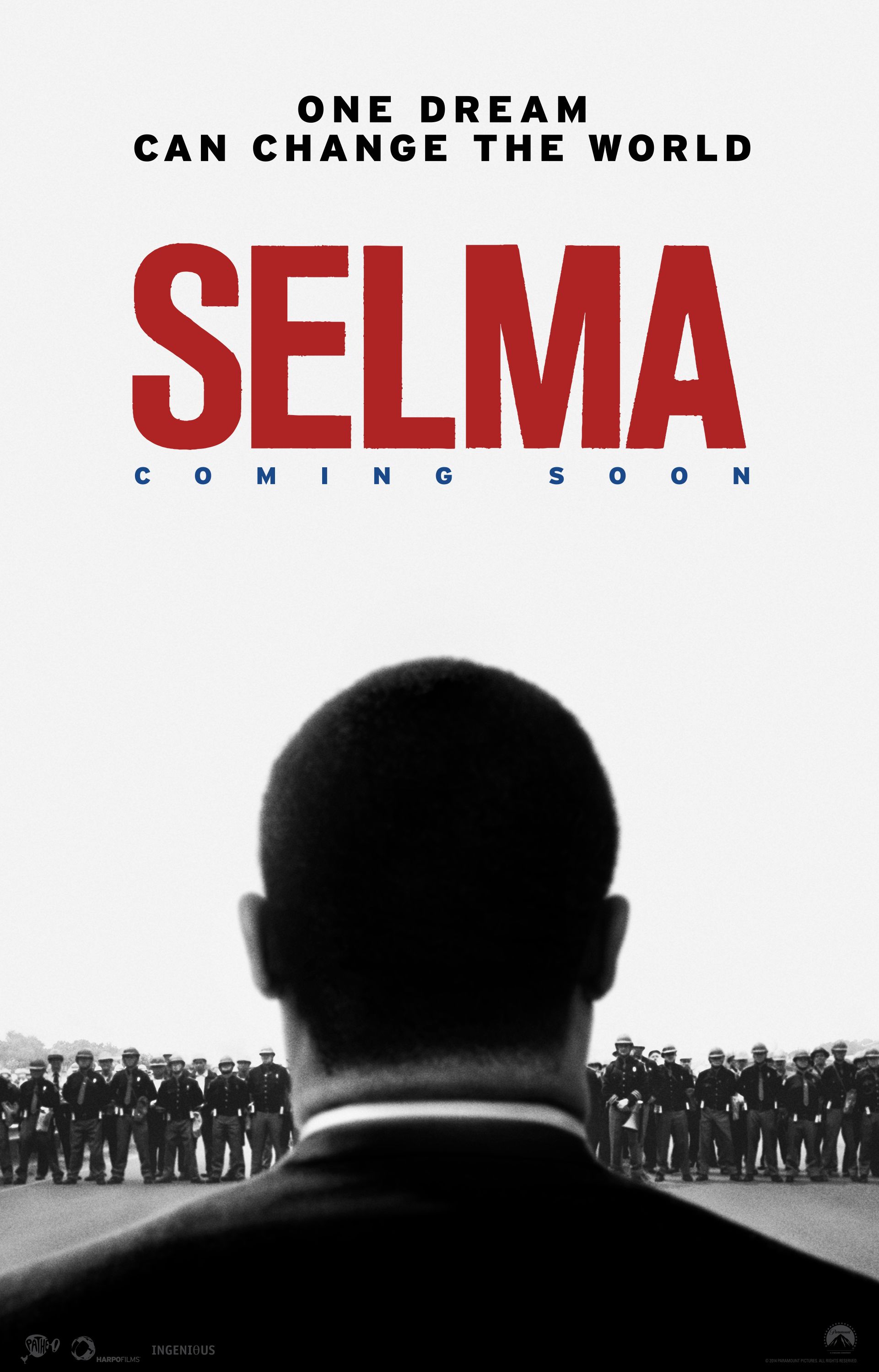In a rare occurrence for this poor recent college graduate, I treated myself to seeing several movies in theaters over the past month, two of which were Selma and She’s Beautiful When She’s Angry. As an African-American female, both movies touched, educated, and inspired me. So it seemed fitting to attempt a combined review of these powerful activist films on the day we celebrate the Dr. Martin Luther King, Jr.
With all the recent events happening in Ferguson and beyond, it is so important now than ever to realize black lives matter (I would say that it’s important to remember black lives matter, but in this country, I don’t think we ever even knew that). Throughout the showing of Selma, all I could think of were the current protests happening. In the dark theater, I thought of how many people say they respect and admire Dr. King and would have fought for Civil Rights, but in the same breath, denounce the current protests going on today. To me, they are one and the same.

It saddens me that Ava DuVernay’s film was snubbed at the Oscars, but thankfully awards do not determine the quality of a film. In Selma, we learn that Dr. King wasn’t a perfect man–– he was human as anyone else–– but regardless, he was the one who fought for freedom (along with countless other Civil Rights leaders) and inspired thousands, if not millions, to join the cause of equality. The same cause Dr. King and others were fighting for back then, is the same cause that is being fought for now: The freedom to be judged by the content of our character, and not the color of our skin.
The parallels between the historical events of Selma and the events of today are uncanny in their similarities. If anyone is still doubting or wondering the historical context of what is occurring now or simply wants more insight into what went into the struggle for equality, Selma would be the absolute film to see. Over the course of the film, graphic depictions of police brutality and government corruption are presented; we see the lives of the fighters and the lives of allies being lost; we learn what it really means to fight for something that you know to be right. It is one thing to sit on the sidelines and wish the fighters for change well; it is another–– and better–– thing to actively lift up our voices and join the fight for freedom and equality, no matter the cause. In Selma (which is now in theaters nationwide), we are called to no longer stand on the sidelines, but to actively learn, cross barriers, and march arm-in-arm with our brothers and sisters in the great cause for life, liberty, and the pursuit of happiness.
In a similar fight for freedom and equality, we have the film She’s Beautiful When She’s Angry–– A documentary featuring the founding mothers of the modern-day feminist movement during the 1970s. Throughout the film, it is made clear that the Civil Rights movement paved the way for the fight for women’s equality. For anyone who identifies as a feminist, this film is especially relevant. You cannot go forward unless you know where you’ve been. And in She’s Beautiful, we learn of the heartening and passionate birth of the radical feminist movement. The film highlights the powerhouses that fought for women’s rights and the struggles they faced in uniting the movement and paving the way for feminism today.

Again, the parallels shown in the film are strikingly identical to the issues we face as current-day feminists, especially when it comes to intersectionality. When it was realized that black women had very different needs from the white feminists leading the movement, separate organizations were established with white feminists lending their support and ally-ship. Speaking on the formation of separate black feminist groups, Linda Burnham (a leader of the black feminist movement) is quoted as saying, “We were struggling to understand what was different about our perspective on women’s place in the world from what we were hearing from the mainstream women’s movement. And we couldn’t have that conversation in spaces that were majority white women.”
The film beautifully exemplifies how intersectional feminism works and what it means to be an ally. When lesbian feminists, such as Rita Mae Brown, were struggling to find their place within the movement and were at first shunned, they likewise formed their own group. Still, as the film shows, though the groups catered to different needs within the feminist movement, they still were fighting side-by-side and for the same cause–– Women’s equality. And they helped and supported each other when fighting for that equality. The sisterhood and organization demonstrated throughout the film was powerful and awe-inspiring. When realizing that illegal abortions were killing countless women, organized underground abortion clinics were formed and saved the lives of many. When doctors wouldn’t educate women about their own bodies, these women created their own curriculum (that is still in print to this day). And when the media wouldn’t give them a voice, they created their own media.
The message of the film is clear: There have been great strides made in the cause for women’s rights (access to abortion, awareness of lesbian and black issues), but there is still a long way to go (access to free childcare, equal pay). She’s Beautiful When She’s Angry (playing in select theaters nationwide) pays tribute to the early day leaders of the feminist movement and inspires all women to pick up the torch and carry on.
From both films, viewers learn that enacting change isn’t just a passive event that happens, but that “change happens because radicals force it” (She’s Beautiful When She’s Angry). Let us not shy away from being radical. Let us fight for what is important and true and change history for the better.